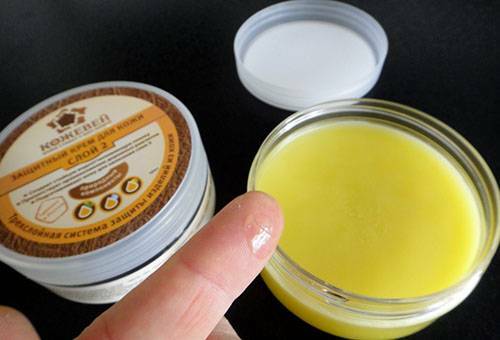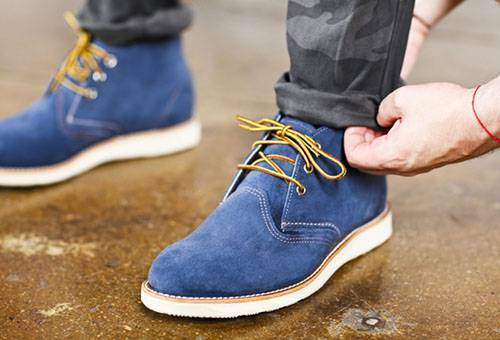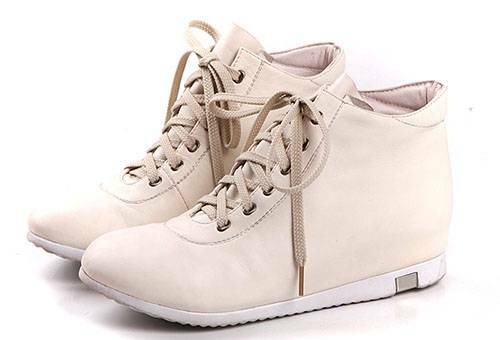- Contents:
- If the whole thing is in the sole
- Skin and suede care
- Shoe care from other materials
With the onset of raw weather, it is especially important to feel comfortable in the autumn shoes: a little soaked, frozen, and the cold immediately makes itself felt. But even in the summer, groaning in shoes is no good, even if you like walking barefoot in the rain, you will hardly like to have wet feet on a regular basis. What can you do with your shoes to protect it from moisture? It all depends on the type of material and the reason for the blotting.

If the whole thing is in the sole of
In search of moisture protection, we first of all pay attention to the means for skin care or suede, not saving on impregnations and wax creams. But what if the problem is not so much on the top of the shoes as in the sole? But it is she who directly contacts wet asphalt or damp earth, and it is her damage or poor quality that causes your wet feet.
Agree, you rarely step into such deep puddles that the shoe goes under the water to the very ankle, but if you still have such a sin, it is better to have a pair of rubber boots right now. The fact is that, stepping into a shallow puddle, you will very quickly feel the moisture on your legs, but neither skin nor suede of good quality can not pass the water so quickly. Most often, moisture does not enter through the main material, but through substandard seams, poorly glued soles or holes and cracks at the bottom of your shoes.
- Low-quality joints can be smeared and impregnated with any water-repellent cream or spray, and animal fats, wax, paraffin or castor oil are suitable for folk remedies. However, getting rid of the problem once and for all this way will not help, and you will periodically need to update the protective layer.
- Badly glued outsole is more common on cheap footwear of leatherette, but regardless of the main material, the solution here is only one: peel off the sole and glue it, and it's better to sew it again. Of course, not all skills are available to the shoemaker, and most likely you will have to bring shoes to the workshop, so think about whether this pair of shoes is worth the money and time spent on it.
- Cracks or holes on shoes can be prooLifit. Although, to get ahead of the problem, do it better with even new shoes. To do this, the sole should be lightly sanded to strengthen the adhesion of the material to the surface, apply linseed oil and allow it to dry completely. A more radical way to deal with the flowing sole is to install the swabs over the native sole.
Board
Shoes of proven brands are characterized by high quality of seams and soles, which means that you will have much less risk to come home with wet socks in such shoes. In addition, the famous brands do not save on the primary impregnation of leather or nubuck, which is also an indisputable plus.

Skin and suede care
Although skin care and nubuck with a water-repellent slant has more aesthetic weight than practical, the skin of poor quality can really pass moisture quite quickly, in contrast to dense skin made according to all requirements. And hardly you want leather or suede soaking up slush, covering with a hideous touch of dirt, even if your feet are absolutely dry at the same time. We tell you what to do, so that the shoes look elegant and do not wear out even in autumn.
- Leather
The market for footwear care products is filled with water-repellent compounds for any materials, so it will be easier to use them. For the skin, impregnation in the form of a spray can be used, but a more classic option is special waxes and creams. Just remember that the emulsion cream can not protect from moisture: you need to choose a more expensive organic product with a high content of fat, wax and oils.
For the skin, unlike suede, there are many folk remedies that can protect shoes from getting wet. The simplest is the treatment of the skin and sutures with castor oil instead of cream, but you can also make mixtures: ½ st.l.turpentine plus 4 tsp.linseed oil and fish oil;1 tsp.paraffin or wax plus 1 tsp.flax oil or a mixture of 1: 1 castor oil and animal fat.
Board
In folk recipes, linseed oil can be replaced or supplemented with a submerged animal fat. It is believed that the best fats are waterfowl.

- Suede and nubuck
For suede, neither wax nor cream is suitable, and the only way to protect it from moisture is by using special impregnations in the form of a spray that is based on water repellent emulsions.
Regardless of what treatment you have chosen and what material you are dealing with, you can arrange impregnation only on clean and dry shoes at least 6 hours before going out. The procedure must be repeated regularly as needed, since the effect of wax and sprays is not infinite.
Council
To qualitatively impregnate the protective substance with new shoes, you can resort to multiple primary processing of shoes. To do this, the shoes should be lubricated or treated with a suitable remedy 3 times at intervals a day before you start wearing it. Spray the spray or apply oil or cream until the shoes stop absorbing them actively.

Shoe care from other materials
If you deal with the blotting of non-leather shoes, then no purchase of care is indispensable. The thing is that it's pointless to apply oil or sprays on leatherette, since it does not absorb water or fat, and the fabric is just silly. It turns out that you will not be able to protect you from getting wet the sneakers, but shoes from leatherette can still be saved.
We mentioned that leatherette itself does not absorb moisture, which means that the problem is most likely that it is poorly glued, poorly sewn or damaged soles, which brings us back to the very first point of discussion. You already know what to do: take care of the sole, and the shoes can be worn for a long time without the risk of getting your feet wet.
With these simple tools and ways to care for shoes, you will not catch cold any more because of the oversight of the footwear manufacturer and bad weather.
